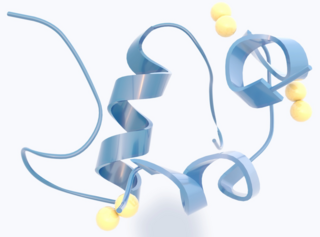
Insulin is a peptide hormone produced by beta cells of the pancreatic islets encoded in humans by the INS gene. It is considered to be the main anabolic hormone of the body. It regulates the metabolism of carbohydrates, fats and protein by promoting the absorption of glucose from the blood into liver, fat and skeletal muscle cells. In these tissues the absorbed glucose is converted into either glycogen via glycogenesis or fats (triglycerides) via lipogenesis, or, in the case of the liver, into both. Glucose production and secretion by the liver is strongly inhibited by high concentrations of insulin in the blood. Circulating insulin also affects the synthesis of proteins in a wide variety of tissues. It is therefore an anabolic hormone, promoting the conversion of small molecules in the blood into large molecules inside the cells. Low insulin levels in the blood have the opposite effect by promoting widespread catabolism, especially of reserve body fat.

John James Rickard Macleod,, was a Scottish biochemist and physiologist. He devoted his career to diverse topics in physiology and biochemistry, but was chiefly interested in carbohydrate metabolism. He is noted for his role in the discovery and isolation of insulin during his tenure as a lecturer at the University of Toronto, for which he and Frederick Banting received the 1923 Nobel prize in Physiology or Medicine. Awarding the prize to Macleod was controversial at the time, because according to Banting's version of events, Macleod's role in the discovery was negligible. It was not until decades after the events that an independent review acknowledged a far greater role than was attributed to him at first.

The Nobel Prize in Physiology or Medicine is awarded yearly by the Nobel Assembly at the Karolinska Institute for outstanding discoveries in physiology or medicine. The Nobel Prize is not a single prize, but five separate prizes that, according to Alfred Nobel's 1895 will, are awarded "to those who, during the preceding year, have conferred the greatest benefit to humankind". Nobel Prizes are awarded in the fields of Physics, Chemistry, Physiology or Medicine, Literature, and Peace.

Sir Frederick Grant Banting was a Canadian medical scientist, physician, painter, and Nobel laureate noted as the co-discoverer of insulin and its therapeutic potential.
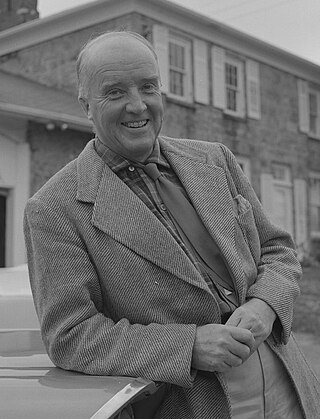
Charles Herbert Best, was an American-Canadian medical scientist and one of the co-discoverers of insulin.

John William Michael Bliss (1941–2017) was a Canadian historian and author. Though his early works focused on business and political history, he subsequently authored several important medical biographies, including of Sir William Osler. Bliss was also a frequent commentator on political events and issues. He was an Officer of the Order of Canada.

The Canadian Medical Association Journal is a peer-reviewed open-access general medical journal published by the Canadian Medical Association. It publishes original clinical research, analyses and reviews, news, practice updates, and editorials.

James Bertram Collip was a Canadian biochemist who was part of the Toronto group which isolated insulin. He served as the chair of the department of biochemistry at McGill University from 1928 to 1941 and dean of medicine at the University of Western Ontario from 1947 to 1961, where he was a charter member of The Kappa Alpha Society.

Robert Holmes Thomson, known as R. H. Thomson, is a Canadian television, film, and stage actor. With a career spanning five decades he remains a regular presence on Canadian movie screens and television. He has received numerous awards for his contributions to the arts, and to war veterans.

Leonard Thompson is the first person to have received an injection of insulin as a treatment for Type 1 diabetes.

Banting House is a former residence and current museum in London, Ontario, Canada. Located at 442 Adelaide Street North, it is known as the “Birthplace of Insulin.” It is the house where Sir Frederick Banting woke up at two o'clock in the morning on October 31, 1920 with the idea that led to the discovery of insulin.
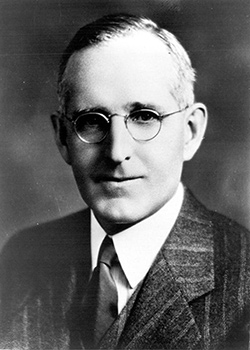
John Gerald "Gerry" FitzGerald was a Canadian physician and public health specialist who was instrumental in the control of diphtheria, first by producing and freely distributing antitoxin, and then in 1924 by using mass production to enable widespread use of the vaccine devised by Gaston Ramon.
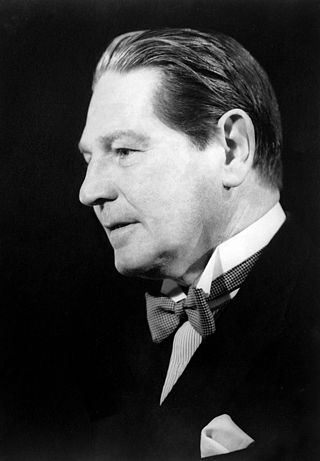
Robert "Robin" Daniel Lawrence was a British physician at King’s College Hospital, London. He was diagnosed with diabetes in 1920 and became an early recipient of insulin injections in the UK in 1923. He devoted his professional life to the care of people with diabetes and is remembered as the founder of the British Diabetic Association.

The condition known today as diabetes is thought to have been described in the Ebers Papyrus. Ayurvedic physicians first noted the sweet taste of diabetic urine, and called the condition madhumeha. The term diabetes traces back to Demetrius of Apamea. For a long time, the condition was described and treated in traditional Chinese medicine asxiāo kě. Physicians of the medieval Islamic world, including Avicenna, have also written on diabetes. Early accounts often referred to diabetes as a disease of the kidneys. In 1674, Thomas Willis suggested that diabetes may be a disease of the blood. Johann Peter Frank is credited with distinguishing diabetes mellitus and diabetes insipidus in 1794.
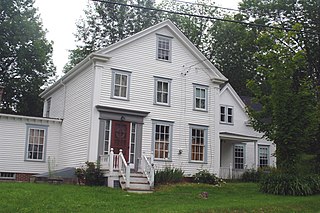
The Charles Best House is a historic house on Old County Road in West Pembroke, Maine, United States. Built in 1845, it is a fairly typical example of a mid-19th century Greek Revival connected farmstead. It is notable as the birthplace in 1899 of Charles Best (1899–1978), who is credited as a co-discoverer of insulin and the development of its therapeutic use in the treatment of diabetes. The house was listed on the National Register of Historic Places in 1982.
Ernest Lyman Scott was an American physiologist and diabetes researcher who spent much of his career on the faculty at Columbia University. Scott's early work contributed to the modern understanding of the biology of insulin and its use in diabetes management, though the exact role and significance of his research in this context has been a subject of controversy. Later, Scott developed a standard blood test for diabetes. After retiring from Columbia in 1942, Scott went on to become a noted horticulturist.

The Connaught Medical Research Laboratories was a non-commercial public health entity established by Dr. John G. FitzGerald in 1914 in Toronto to produce the diphtheria antitoxin. Contemporaneously, the institution was likened to the Pasteur Institutes in France and Belgium and the Lister Institute in London. It expanded significantly after the discovery of insulin at the University of Toronto in 1921, manufacturing and distributing insulin at cost in Canada and overseas. Its non-commercial mandate mediated commercial interests and kept the medication accessible. In the 1930s, methodological advances at Connaught updated the international standard for insulin production.
The Banting Medal, officially the Banting Medal for Scientific Achievement, is an annual award conferred by the American Diabetes Association (ADA), which is the highest award of ADA. Inaugurated in 1941, the prize is given in memory of Sir Frederick Banting, a key discoverer of insulin and its therapeutic use.
Walter Ruggles "Dynamite" Campbell was a Canadian physician and diabetologist, known as the first physician "to administer insulin to a patient."
Andrew Almon Fletcher was a Canadian physician and pioneering diabetologist, known as one of the five co-authors of the famous 1922 paper Pancreatic Extracts in the Treatment of Diabetes Mellitus.
















